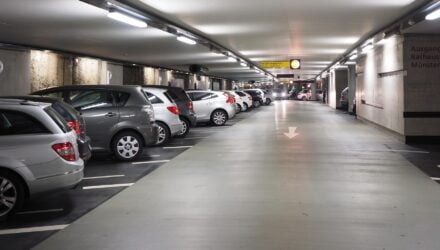
As the weather is forecast to turn colder and snow predicted in many parts of the UK next week, a new study is highlighting the risks too many drivers are taking in bad weather. The survey, carried out on behalf of Brake and Direct Line, reveals 71% of drivers questioned do not know how much longer it will take their vehicle to stop in icy conditions. This means they could be putting other road users, and themselves, at risk by under-estimating the distance.
11% of drivers think the stopping distance is twice as long in icy weather, a third think it’s four times as long and 27% think it should be five times as long. Just 23% of drivers know that the actual figure is up to 10 times as long, with 6% being even more cautious and believing it is up to 20 times as long.
That means, while on a fine day, if you are driving at 30 mph and need to brake immediately it will take you 23 metres to stop, in icy conditions it could take up to 230 metres – that’s the length of two-full size football pitches [i]and, of course, the faster you are travelling, the further that distance could be.
Many drivers also do not know enough about stopping distances in wet weather.
More than one in five drivers (22%) fail to check the gap between their car and the car in front, and another fifth (21%) do not leave a large enough gap, meaning that, if they have to brake suddenly, it could lead to a serious crash. Brake recommends that drivers leave at least four seconds between their vehicle and the vehicle in front in wet weather.
More than half of drivers questioned (54%) think that other drivers travel too fast in poor weather conditions, and two thirds (66%) believe other drivers do not leave enough space to stop.
This is why Brake and Direct Line are encouraging drivers to adjust their driving style to the conditions of the road as temperatures drop, and sleet, snow, frost and ice are all forecast.
Gary Rae, campaigns and communications director for Brake, the road safety charity, said: “Our roads are at their most dangerous during the winter months, so drivers must be at their most cautious. We don’t want any more families to be torn apart by crashes caused by drivers not adapting to the conditions. Ice, snow, heavy rain and fog make driving incredibly risky; stopping distances double in wet weather and can increase up to ten-fold in ice and snow. If snow is forecast, we urge people to think about whether their journey is necessary, but if you get caught out driving in bad weather the critical thing is to slow right down and keep your distance, bearing in mind it will take you much longer to stop in an emergency, and to react in the first place, if visibility is reduced.
Rob Miles, director of motor trading at Direct Line, said: “Even if you feel confident driving in icy or snowy conditions, others may not be able to keep full control of their car and may not be observing the correct stopping distances. If you need to drive, make sure that you take it slow and steady and don’t panic or slam on the brakes. Also, make sure you’ve de-iced your car fully before you drive off as restricted views out of the windows cause needless and preventable accidents. If it’s not safe or you feel too nervous, don’t make the journey.






